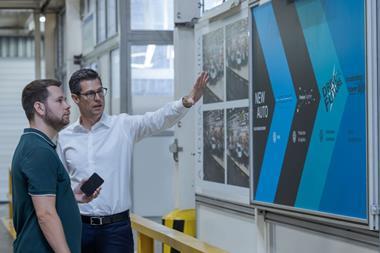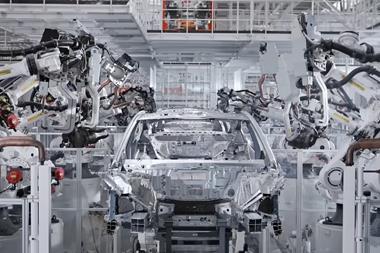 Automotive manufacturing has, for the most part, become an exact science. With the exception of a few bespoke, artisan operations on luxury models, every operation is simulated, programmed and performed with exacting accuracy. Production processes aim to eliminate errors even within the operations carried out by human operatives. This drive for efficiency and, dare I say, perfection is highlighted in AMS March-April’s technology feature, which focuses on automation and control.
Automotive manufacturing has, for the most part, become an exact science. With the exception of a few bespoke, artisan operations on luxury models, every operation is simulated, programmed and performed with exacting accuracy. Production processes aim to eliminate errors even within the operations carried out by human operatives. This drive for efficiency and, dare I say, perfection is highlighted in AMS March-April’s technology feature, which focuses on automation and control.
Although still some way from becoming fully realised, human/robot interaction in assembly is now being implemented and is the subject of serious development. While the emphasis from robot builders is on automation assisting rather than replacing human operatives, the potential to transform assembly processes seems huge. This exactitude isn’t restricted to large-scale production systems. Our report on BMW’s embracing of Industry 4.0 reveals how smart technologies, such as Google Glass and 3D printing, are now being utilised to refine and enhance even the smallest of operations.
It’s always interesting to see how one piece of sophisticated technology has its application enabled and expanded by another. The case in point is remote laser welding, which, according to our special report has been restricted in automotive manufacturing by a lack of suitable planning and simulation tools. Given the ubiquity of virtual simulation for design and manufacturing operations in this industry, it was surprising to find that laser welding, now gaining favour in automotive production, was lagging behind here. This illustrates the rapid pace of development within vehicle manufacturing and also the challenges for OEMs in meeting the growing list of demands made of them.
Technology generally creates transparency in operations and processes, but not in all instances. Our report from Nissan’s EV battery plant in Sunderland describes a process likened to ‘the ageing of a fine whisky’ which the batteries undergo, but that’s as much as we could find out as our guides were sworn to secrecy. Such commercial sensitivity is understandable but only piques the interest of journalists and engineers alike.
At first glance, few things seem further removed from high-tech computer simulations and smart technologies than recycling metal, but nothing could be further from the truth. The title ‘scrap’ belies the fascinating and very high-tech process of recovering and recycling aluminium as revealed in our materials feature. It also illustrates the challenges of supplying the auto industry with suitable recycled aluminium at a time when demand is expected to increase dramatically.









































